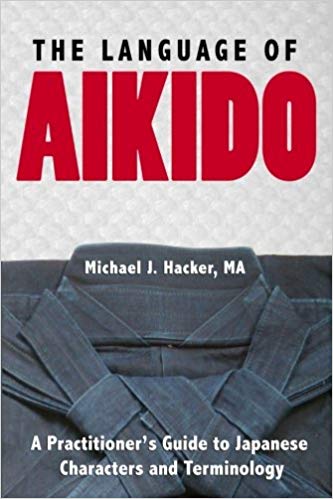It drives me nuts to not understand what’s being said. Even worse, to use words I don’t understand, repeating them by rote. So I’ve tried my best to make sense of the terminology around Aikido. In most cases the explanations I give will simply be my own understanding of the meanings, tricks I use for remembering them, etc.
Disclaimer: These posts are as accurate as I can make them, but all are informally based on my own very limited understanding. I will try to give some indication of how sure I am of what I’m saying, and if I’m just plain wrong please tell me so (and if appropriate I’ll go back and correct things). Any pronunciation tips I give will only be for how I’ve heard them spoken in the context of training, not The Correct Japanese Pronunciation. In no case should anything in these posts be considered authoritative. I do hope it will be helpful, though!
When I know of solid sources of information I point those out. There are a few very good books, websites, and podcasts, both for learning Aikido-specific terminology, and for learning to speak Japanese. If you want to go deeper, please take advantage of them.
Here is a list of shortcuts to my blog posts about some of the Japanese words we use at the dojo:
- Words: Huh? What’s Everyone Saying? First words you hear around the dojo.
- 6th Kyu Words Piecing together basic technique names.
- Weapons Words – The Big Picture A place to begin with weapons words.
- How To Learn to Count Out Loud to 31 in Japanese, Under Pressure, and with Distractions For anyone with Saito Sensei’s 31 jo kata coming up on their exam!
- Words for Weapons Take-Aways: Jo-Dori , Tachi-Dori, and Tanto-Dori Also a look at throws and pins with weapons — jo-nage and tachi-nage techniques.
- Coming someday… More attack and technique-related words.
- Coming someday… Names of things around the dojo.
- Coming someday… Bokken suburi names.
- Coming someday… Names of the 20 jo suburi.
- Coming someday… The names of each move in the 31 jo kata.
- Coming someday… Commonly-heard Japanese greetings and phrases.
Want to go deeper?
 In addition to reading my handy introductions, quick reference pieces, and overviews here, every student of Aikido should have this excellent, in-depth book: The Language of Aikido: A Practitioner’s Guide to Japanese Characters and Terminology, by my linguist friend Michael Hacker. Consider getting an extra copy for your dojo library, too.
In addition to reading my handy introductions, quick reference pieces, and overviews here, every student of Aikido should have this excellent, in-depth book: The Language of Aikido: A Practitioner’s Guide to Japanese Characters and Terminology, by my linguist friend Michael Hacker. Consider getting an extra copy for your dojo library, too.
<< Back to Helpful Stuff




